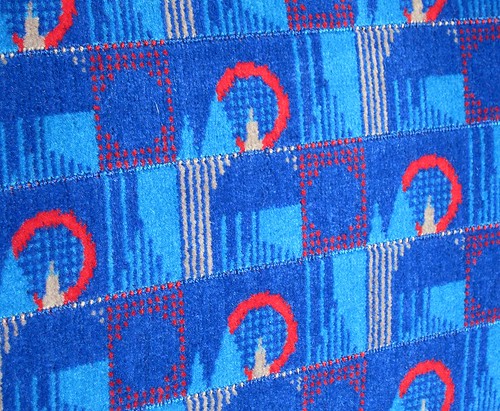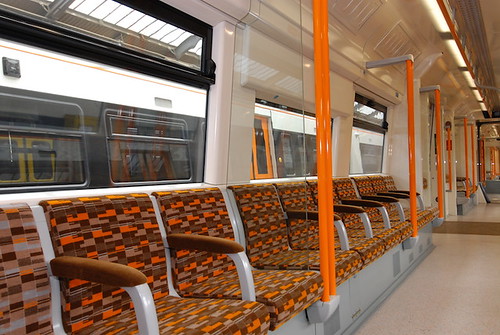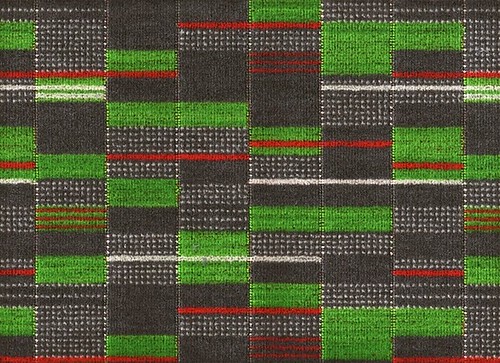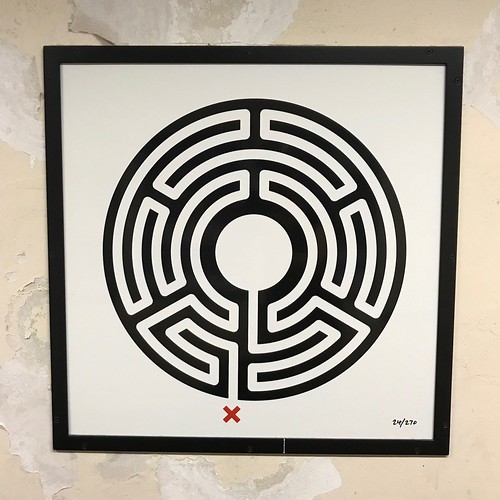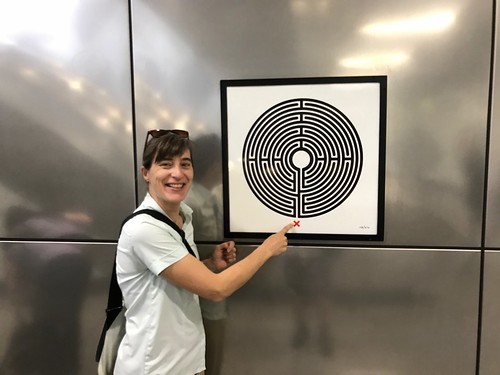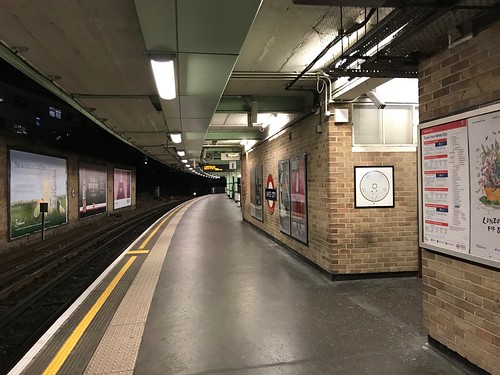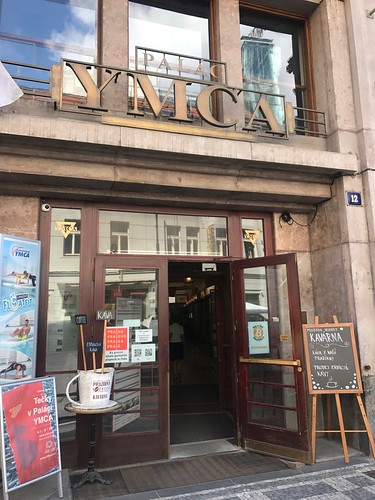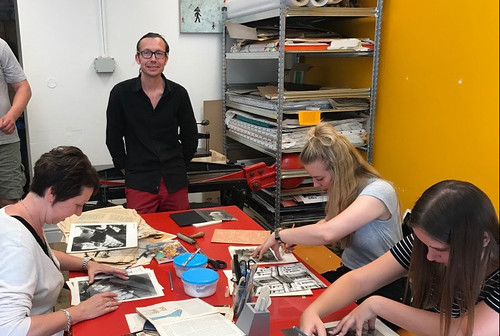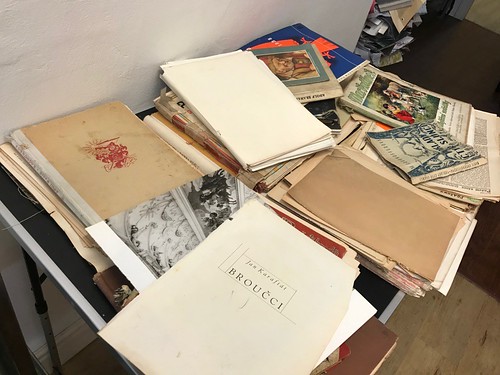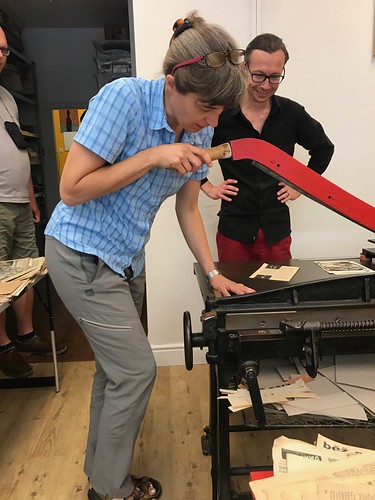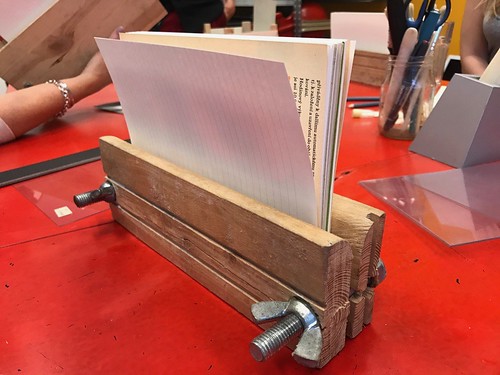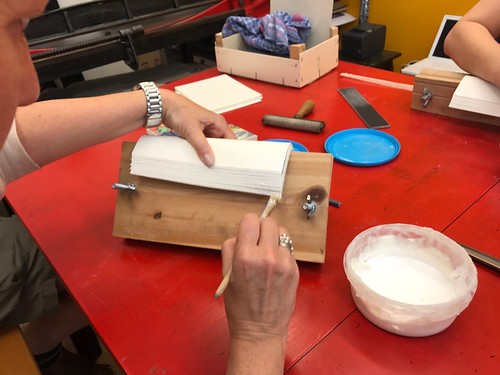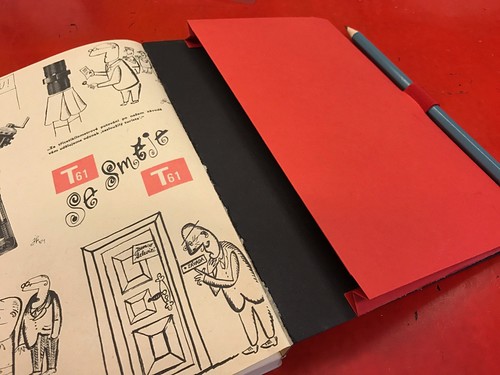It’s all London Transport all the time today, when I share a few quirky little things about the system that even some proper Londoners won’t know about, thus ensuring that Astute Go Stay Work Play Readers are equipped with the kind of random but meticulously fact-checked (read “occasionally looked up on Wikipedia”) nuggets that make up 31% of any GSWPL blog post. (The other 68% is made up of stuff about food, slightly out-of-focus photos, unrelated ranting, stuff about the boat, and dodgey math.)
First, spare a thought for the poor seats on a tube train. I suspect most people only think about the seats when they don’t get one, but the seats on London transport have one thing in common - moquette. See? Already, a new word! Moquette is the name for the dense pile fabric used in carpet and upholstery and, most notably, as a covering for the seats in Transport for London conveyances of all kinds - tube trains, overground trains, trams and busses.
Even the dopiest Londoners will have noticed that TFL moquettes come in a few different and distinctive patterns. This is because when you run an operation the size of the TFL with an annual budget north of £11 billion pounds, you don’t just slope down to the local neighbourhood upholsterers and pick up a job lot of whatever is going cheap. Instead, you have competitions to select designs and have them woven by the kilometre, resulting in this kind of thing:
A pattern called Barman, named after Christian Barman, London Transport’s publicity manager between 1935 and 1941. Barman appears in Central, Jubilee and Northern line trains. Can you find the four London Landmarks hidden in the Barman pattern? If not, check out this video.
And here’s the design for the whole Overground system, which reminds me of being in an A&W in the 1970s. Oooooohhh... how great would it be if you could get onion rings on the Overground?
The festively coloured moquette for the Croydon Tramlink, perfect for Christmas.
And, excitingly, here’s a sneak peek at the moquette for the yet-to-be-completed Crossrail, now officially named the Elizabeth Line, after HRM. It will be coloured purple on the tube map. (Finally! How can the tube map have three different shades of blue (plus the DLR, so really FOUR) and no purple?!)
What do all of these patterns have in common? Here’s another tidbit for the GSWPL fact-o-meter: They were all designed by the same company. More surprisingly, it’s not a giant faceless mega-corporation, but a small team of two designers who work from a tiny shop near Kings Cross. I find it quite gratifying that the seats where millions of Londoners place their butts daily was dreamt up by a couple of independent designers a short walk from Angel Station. (Also, if anyone is struggling for gift ideas to express your gratitude for my EIGHT YEARS of faithful blogging, anything from here would be nice. I especially like the Bakerloo pattern...)
However, before you get to nestle your buns on a fuzzy Barman-covered seat, you’ve first got to find your way through a ticket hall and onto a platform. And in doing so, you might notice something unusual, like this:
What’s that on the wall of this otherwise non-descript tunnel at East Acton station?
Here’s a close-up. It’s a labyrinth! (Additional bonus fact: A labyrinth is a single winding path usually set in a decorative layout and only ever containing one start and one finish point. This is distinct from a maze, which is a puzzle with many branching pathways and dead ends.)
This labyrinth at East Acton is just one two hundred and seventy different labyrinths - one for every station in the London Underground system. They’re all part of a major artwork installation commissioned by the TFL for their 150th anniversary in 2013. (So that’s where the £11 billion is going, obviously.) Each one is unique and was designed by Mark Wallinger, a Turner Prize winning British Artist. In fact, the TFL has a long history of supporting art on the Underground, with their well-known program called… wait for it... Art On The Underground. (And that’s just visual art. They also do poems, but that’s another blog.)
The labyrinths are depicted in black and white enamel on a metal background about two feet square, and they’re not all obvious. In fact, there are no descriptive plaques of any kind. No indication that they’re artwork. No credit to the artist. No explanation of any kind. They just… are. The graphic nature of them makes them a bit puzzling too, like they could be maps or advertisements or… who knows? They're also made by the same company and in the same dimensions and materials (sheet steel and vitreous enamel) as every station label roundel in the system, which makes them seem oddly familiar. The enamelling also gives the labyrinth a tiny bit of depth and texture, which makes is sort of pleasing to run your finger along the path, starting, of course, at the little red X.
I recently started collecting the tube labyrinths, which really just means that when I come across one I take a picture. I’m up to 21 now, which is a whopping 7.7% of the system, but considering I’ve only been at it for about a month, I think that’s pretty good. If nothing else, it makes me pay a bit more attention instead of shuffling around tube stations like a zombie.
The labyrinths are all circular, echoing the shape of the iconic tube symbol, and come in a surprising number of styles that the artist put into categories like square, chamfered, woodcut, emboss, cretan, medieval, organic, and a few others. (There's a great documentary about the tube labyrinths here, which talks some about the mathematics behind labyrinth design and about the project as a whole.) There’s even a book of all the labyrinths, with photos showing them in situ and including interesting facts about the station. It looks lovely but large and hardcovered and not very boat-friendly in an overhanging, shelf-hogging kind of way.
And here's one more fun fact about the labyrinths - see the hand written numbers in the bottom right hand corner?
Here’s Camden North, 111/270 and cleverly hidden behind a large spider plant
They resemble the sort of numbering system that artists use when producing limited-edition prints. Which, in a way, they are. However, the number assigned to each station is not random, and has nothing to do with the the order in which they were produced. They’re part of another odd bit of tube-lore: The Tube Challenge.
The Tube Challenge is a competition for the fastest time to travel to all 270 London Underground stations, which has been a recognised Guinness World Record since 1960. The current record is held by Steve Wilson and Andi James, who completed the challenge in 15 hours, 45 minutes and 38 seconds on 21 May 2015. The Tube Challenge is a serious logistical puzzle that requires competitors to start early in the morning on the first train from a far-flung station, race on foot between nearby stations to optimise travel times, and pray there are no delays or signal failures. (And also deal with annoying, dead-end stations or ones that only operate on alternate Thursdays as dictated by the lunar cycle or some crap like that. Kensington Olympia and Turnham Green, I’m talking to you.)
(Vaguely related aside: Sometimes the drivers and platform staff on the Underground can be really fun - joking and making silly comments over the public address system. My favourite example of this is one I found on a now-dead website of Tube lore: “Turn ‘em red. Turn ‘em yellow. Turn ‘em any colour you like, but this is Turnham Green!”)
What does this have to do with my labyrinths? Well the numbering order of the labyrinths is based on the order in which each station was visited during Steve Wood’s 2009 record-breaking journey! (He subsequently bettered it twice, once in 2011 and once when he set the current record.) Chesham, at the far end of the Metropolitan line, is first on the list, which is not surprising considering it’s one of only two stations in Zone 9 so you really want to either start or end there. Heathrow Terminal 5 is number 270, which is a rough place to end up after 15 hours of sprinting and train-hopping. I wonder if they took the tube home after they finished their record-breaking journey?
So the Underground labyrinths, which most people already don’t really notice, have an even more obscure added level of tube geekery. And if that’s not the best, most obscure TFL fact you’ve ever heard, then basically you suck.

